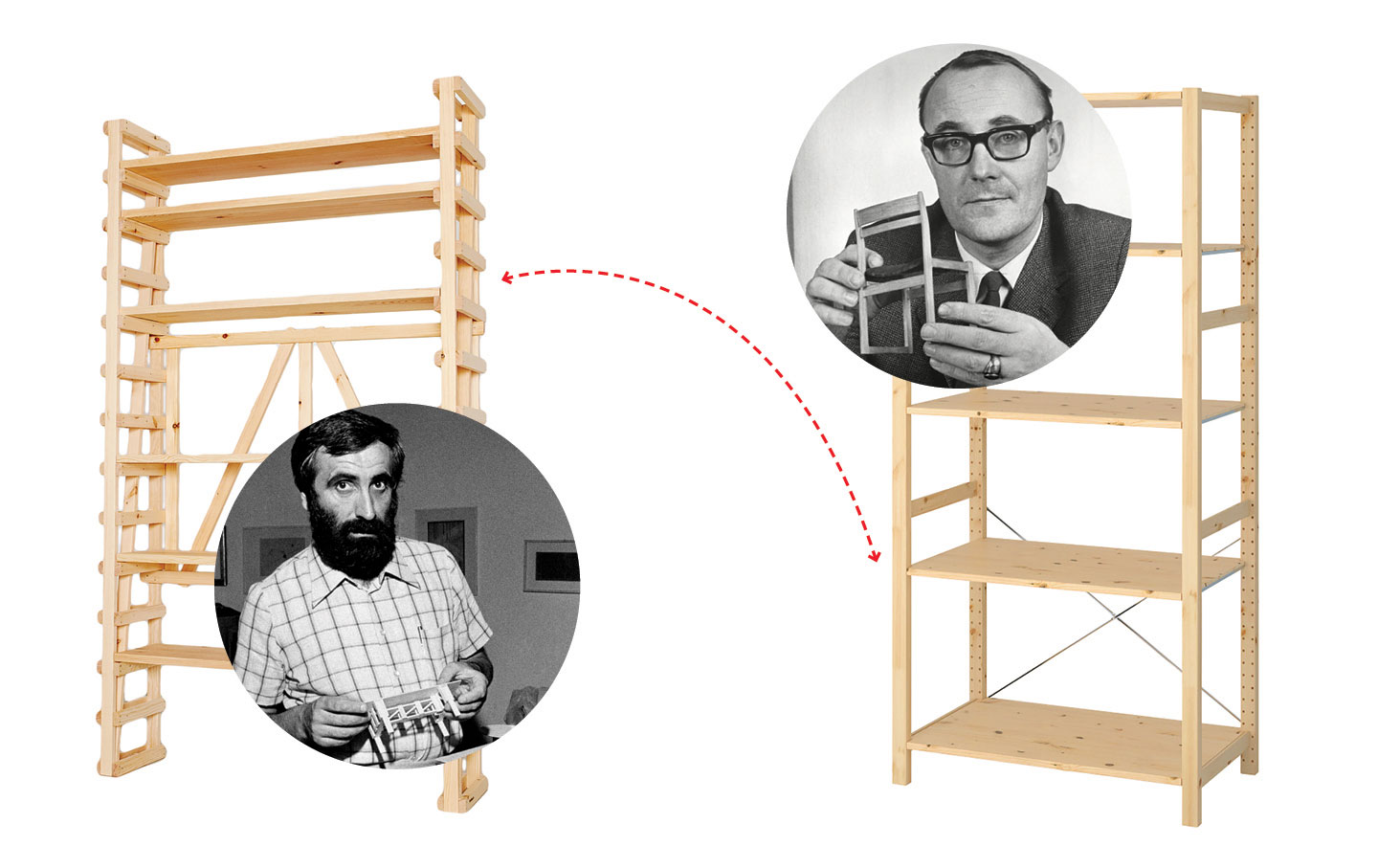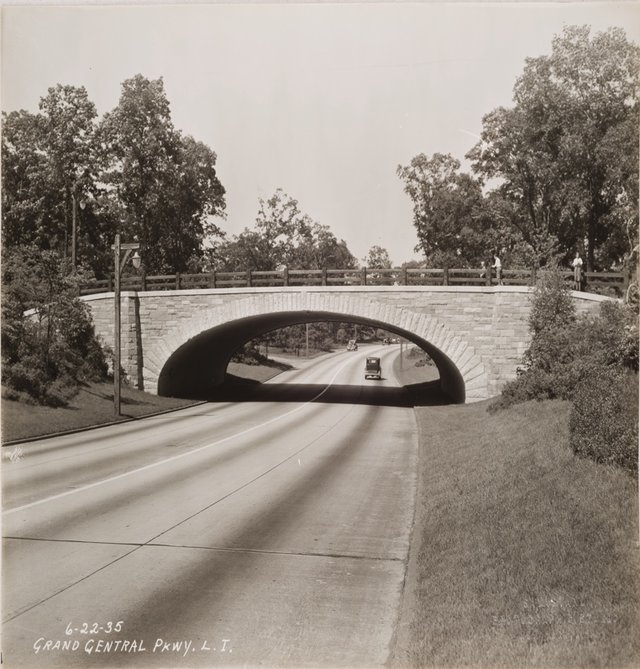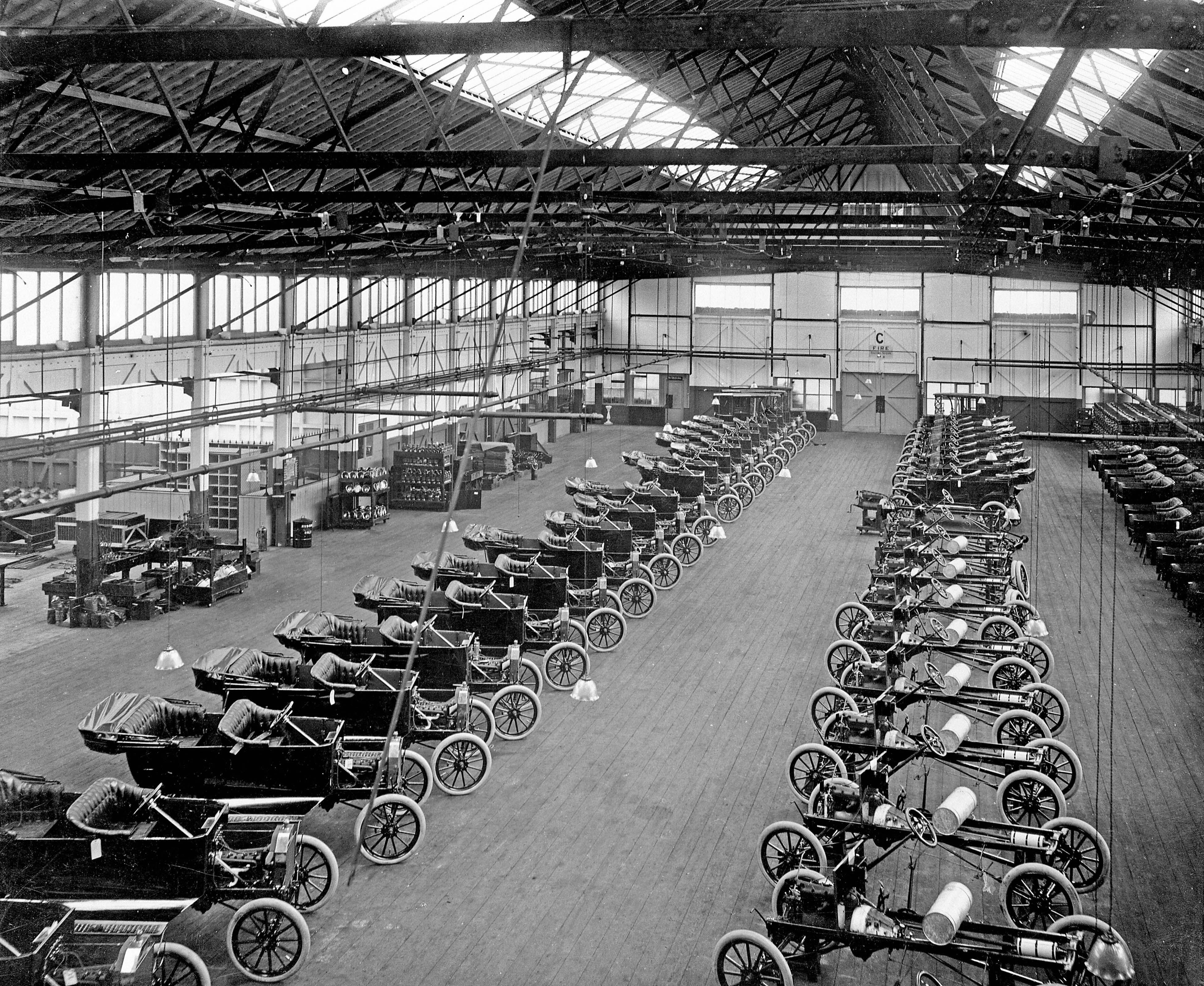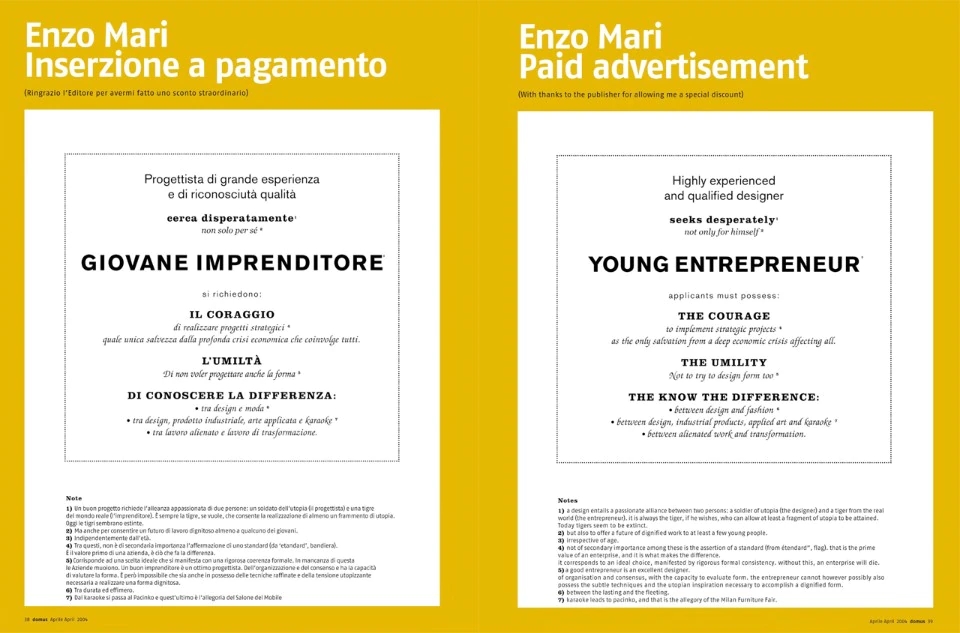Originally published in Other Worlds. On the 27th of September 2021, the text was presented at the Museum of Art, Architecture and Technology of Lisbon and discussed with design critic Francisco Laranjo, director of the Center for Other Worlds.
But is there still room for design? Frankly, it is very small. — Tomás Maldonado1
Mass-Produced Impact
A traditional view of power in design sees designers changing the world through the things they design: products, services, systems, environments, tools, machines. By designing the artifacts that make up our artificial world, they contribute to make the world more and more artificial, and, it seems, inescapably so. At the beginning of the twentieth century, in the culminating phase of industrial production and mass communication, the link between cause (design) and effect (world changes) was particularly tangible since its scale was colossal. Armies of identical artifacts would enter the life of the masses for a relatively long time. The slightest design change would suddenly readjust the operations of this mechanically-reproduced battalion of things. The designer could think of themselves as a commander whose designerly ‘orders’ would be executed en masse, in line with Weber’s definition of power, namely, “the possibility to find obedience to a command.”2 A modern perspective on production implied a modern understanding of design’s power. “One design for all” wasn’t just a technical necessity but a programmatic ambition. Consider, for instance, Henry Ford’s faith in a universal car, the T model. In 1922, the same year when Weber offered his definition of power, Ford expressed his deliberate intention to “build a motor car for the great multitude.”3
We haven’t seen the sunset of standardized production yet. Most of the things we purchase and use are still mass-produced. Furthermore, if we take digital services into account we have to admit that an entirely new dimension of mass production has emerged. One where segments of this mass are relentlessly sieved by means of quick cycles of test and implementation, one where an interface change on a platform used by the millions, instantly deployed, can have monumental consequences. But how common is it for a designer to work on such level? Pretty rare. Only a handful of designers have access to the prototyping rooms of these massively used products.4 The majority of them will likely work on projects whose impact is limited in time, space and reach. Big projects, perhaps, but hardly as gargantuan. This doesn’t mean that their effort have little or no effect, but that such effect doesn’t match the modern forma mentis of power as vast scale standardization. Mentions of the tremendous influence designers possess will be met by most of them with some reasonable skepticism.
Cause and Effect
The modern, ‘scalar’ idea of design power also tends to place too much emphasis on the single object, as if its transformative power weren’t enhanced or hindered by the environment it inhabits. As if the object weren’t caught in a network of interactions with other objects. As if it weren’t deriving its meaning from the ambient it resides in. A linear, almost mechanistic understanding of design power (designer > product > user5) masks the improvisational role that the object performs on the stage of everyday life. The protagonism of the isolated object reflects another protagonism – that of the designer. A reassuring narrative of invention also plays its part: when we perceive a groundbreaking change in habit we are tempted to look for a singular artifact that represents such change: a symbol. Then, we try to identify an individual who conceived it, possibly through a Eureka moment.
However, we shouldn’t forget that while products and services affect the world, they are also affected by it, and not just after coming into existence. According to design historian Glenn Adamson, the commodity itself is a consequence of power more than a cause of it, as the commodity is shaped by power relationships before entering the stage of everyday use. While discussing the formal similarity of two bookcases conceived by two politically antipodal designers (the communist Enzo Mari and the Nazi sympathizer Ingvar Kamprad, founder of IKEA), he refers to the realization that “by the time something is designed, it is usually too late to determine its political effect. Commodities are principally the outcome of power relations, not the cause of them.”6

Enzo Mari on the left and Ingvar Kamprad on the right. Collage that illustrates Glenn Adamsons’s article on The Nation.
Reflecting on how politics precede the use of a certain artifact, political theorist Langdon Winner mentions the infamous case of the New York’s Southern State Parkway bridges. These bridges, conceived by Robert Moses in the 1920s, were too low for a bus to pass. Plain bad design? Not really. Moses deliberately limited the access of disadvantaged citizens, mostly people of color, who generally used buses to get into town.7 This is an unusually blatant case of design wickedness. Winner himself admits that it has an almost conspiratorial sounding. But from the perspective of power, it can be considered an exception more than a rule, the exception having to do not with racial and class bias, which were and are both common, but instead with the coincidence of authority and execution. In fact, Winner highlights the influence that Robert Moses had over governors and presidents. How likely is a for a designer to have the full authority and agency to, paraphrasing Winner again, embody their intention in physical form?

Low overpass bridges on Long Island Parkways. Source: Ethics in architecture: Introducing concepts of power and empowerment by Alexandra Staub.
Design, cause or effect? Is the designed artifact at the source of a causal stream or at its estuary? This line should in fact be thought of as a circle, since humans design things, but then those things design them back. “Design designs”, as Tony Fry puts it. Design doesn’t only shape use, but also meaning: it impacts the way people make sense of the world, designers included.8 However, this circularity might suggest that people are as much active in the design of their environment as they are designed by it. In reality, the environment’s capacity to ‘design’ us is stronger than the one that we, as individual, have to design it.
Cogs and Needles
Dutch philosopher Koert van Mensvoort proposes an evolutionary perspective on the development of a common product, the Gillette razor. His provocative account is radically ‘object-oriented’:
Obviously many designers and engineers have been involved in the creation of my razors over the years. No doubts these are all decent and friendly people–with good incomes too–but what more are these creators of the individual models than little cogs in the perpetuating Gillette Company? Calling them engineers and designers is arguably too much credit for the work they do, as they merely sketch the next razor model, of which one can already predict the ‘innovative’ new properties […] It’s not like they are in a position to think deeply on the meaning and origins of shaving, in order to reinvent this ancient ritual. Like bees in a beehive their work is determined by the logic of the larger structure.9
Karl Marx deemed imagination the fundamental difference between the architect and the bee, the human and the animal.10 Van Mensvoort reverses the axiom, showing that this faculty cannot be fully exercised within a highly crystallized and interrelated industry. In a perverse twist, the commodity is here the main, powerful agent shaping the work of designers. The thing makes us more than us making the thing, not only in a physical sense, with the assembly line determining the gestures of the worker, but also intellectually, with market forces setting the objectives and constraints within which designers should work. The picture is bleak, probably too bleak. And yet, many designers feel trapped in such an “iron cage”.
Design curator Paola Antonelli is more optimistic. In a recent interview she declared that:
Design has a lot of power that is still untapped and unexplored. There are many different types of designers. They all have influence on our behavior. Some have fundamental, earth-shattering influence, like the designers behind apps and electronic appliances and the interfaces we use all the time. Facebook, Instagram, Twitter. That’s design of the system but also the interface. Other designers might have less effect, but they all act under different pressure points under the great acupuncture system of human life.11
While acknowledging the sheer variety of existing designers, Antonelli adopts a poetic image that conflates them, with the risk of mitigating the immense power differential that designers can have. Furthermore, the acupunctural analogy doesn’t say much about the specific power that design holds and the peculiar way in which such power is exercised.
Too Low in the Power Structure
The case of “earth-shattering influence” of apps and digital devices deserves further scrutiny. Interdependence, complexity and hierarchy limit the designer’s attempts of to impress their personal or professional agenda into the artifacts. The structures of production, distribution and consumption, while constantly changing, are tight into a mesh of interrelations, like a tense nylon cobweb. This means that a radical intervention upon them is unlikely, and even more unlikely is the possibility that the designer alone or in a team would make such intervention. The power of design is under everyone’s eyes: design has indeed changed the face of our planet, our way of conceiving it and the way we exist within it. Design is indeed “one of the most powerful forces in our lives”, as Alice Rawsthorn argues.12 But the fact that design is powerful doesn’t necessarily imply that designers are.
This might be true both for the everyday designer, be they a smalltown solo practitioner or a corporate employee, and the design maestro. In 2004, Enzo Mari published a paid advertisement on the architectural magazine Domus. It read: “Highly experienced and qualified designer / seeks desperately / not only for himself / YOUNG ENTREPRENEUR”. He did so to highlight the fact that in his industry the one truly allowing for things to happen is the entrepreneur.13
In more than one occasion, Don Norman, American pioneer of user-centered design, raised doubts on Papanek oft-quoted claim that “There are professions more harmful than industrial design, but only a very few of them”. According to Norman, the motto is “well-intended but wrong: [Papanek] gives too much credit to designers who are generally too low in the power structure to matter.” He adds: “Designers then (and today) are servants of their masters: Their client or employers. Design is a tool of industry, and because industry does not pay for externalities, they think nothing of destroying the environment in mining for maters (sic), in manufacturing, and in disposal of poisonous stuff.”14
Norman is echoed by John Maeda, design-star who popularized the idea of a design-led company. In 2019 he made a somber declaration: “In reality, design is not that important.” Here’s his reasoning: “We know that tech people are in charge of the world: They can approve pull requests and they push the code out and right or wrong happens.” Designers, far from being the center of the design process, are themselves ancillary. Would it be good, then, to change this state of affairs? Not according to Maeda, who thinks companies led by designers might achieve resonance among a design-savvy crowd, but their technical structure might be brittle, leading eventually to failure.15
To conclude the first part of this inquiry into the relationships between design and power, I would like to bring in some pointers regarding the possibility for the designer to inject agency into the design and therefore the world. First, as Winner reminds us, the room for changing an artifact is greater when the typology of such artifact is initially introduced, after that phase its malleability decreases. The artifact becomes stabilized. But not every designer can be a pioneer. Most will work with consolidated types of product, such as the razor. Second, the actual position of the designer in the hierarchy of an organization matters: generally too low, according to Norman. And one can assume that the larger the structure, the more difficult is to gain a position at the top.
1 Maldonado, Tomás. 1970. La speranza progettuale. Torino: Einaudi, p. 76. Translated by the author.
2 Weber, Max. 2019. Typen der Herrschaft. Ditzingen: Reclam, p. 7. Weber uses the word Herrschaft, a term covering a vast semantic field including notions of authority, rule, dominion, power, etc.
3 Ford, Henry, and Samuel Crowther. 1922. My Life and Work. New York: Doubleday and Company. Accessible here: https://college.cengage.com/history/primary_sources/us/henry_ford_discusses.htm.
4 An example of that is Spotify, which in 2018 was used by around 200 million monthly active users. At the time, it had only 200 designers. A ratio of one designer for one million users, more or less the population of the city of Milan. See: https://spotify.design/article/reimagining-design-systems-at-spotify and https://www.statista.com/statistics/367739/spotify-global-mau/.
5 The Greater Good Studio, for instance, proposes the following “theory of change”: “We believe that research changes design, design changes behavior, and behavior changes the world”. See: https://web.archive.org/web/20160918151937/http://www.greatergoodstudio.com:80/theoryofchange/.
6 Adamson, Glenn. 2021. “The Communist Designer, the Fascist Furniture Dealer, and the Politics of Design.” The Nation, February 20, 2021. https://www.thenation.com/article/culture/enzo-mari-ikea-design/.
7 Winner, Langdon. 1980. “Do Artifacts Have Politics?” Daedalus 109 (1): 121–36.
8 Fry quoted in Willis, Anne-Marie. 2006. “Ontological Designing.” Design Philosophy Papers 4 (2): 69–92. https://doi.org/10.2752/144871306X13966268131514.
9 Mensvoort, Koert van, and Hendrik-Jan Grievink. 2015. Next Nature: Nature Changes Along With Us. Barcelona: Actar.
10 Marx, Karl. 1999. Capital. Vol. 1. Marx/Engels Internet Archive. https://www.marxists.org/archive/marx/works/1867-c1/index.htm.
11 Antonelli, Paola. 2019. MoMA curator: “[Humanity] will become extinct. We need to design an elegant ending” Interview by Suzanne LaBarre. https://www.fastcompany.com/90280777/moma-curator-we-will-become-extinct-we-need-to-design-an-elegant-ending.
12 Rawsthorn in Heller, Steven. 2014. “‘Design Is One of the Most Powerful Forces in Our Lives.’” The Atlantic, March 13, 2014, sec. Culture. https://www.theatlantic.com/entertainment/archive/2014/03/design-is-one-of-the-most-powerful-forces-in-our-lives/284388/.
13 Mari, Enzo. 2004. “Inserzione a Pagamento.” Domus, April 2004. It is worth pointing out that Mari still had a pretty romantic idea of the impact of design. From the ad: “A design entails a passionate alliance between two persons: a soldier of utopia (the designer) and a tiger from the real world (the entrepreneur). It is always the tiger, if he wishes, who can allow at least a fragment of utopia to be attained. Today tigers seem to be extinct.” Here, Mari didn’t consider the idea that the tiger of the real world, the entrepreneur, might be caged by economic imperatives.
14 Norman, Don. 2020, 2021. Email to the PhD-Design Mailing List, August 9, 2020 and March 18, 2021.
15 Schwab, Katharine. 2019. “John Maeda: ‘In Reality, Design Is Not That Important.’” Fast Company, March 15, 2019. https://www.fastcompany.com/90320120/john-maeda-in-reality-design-is-not-that-important.


